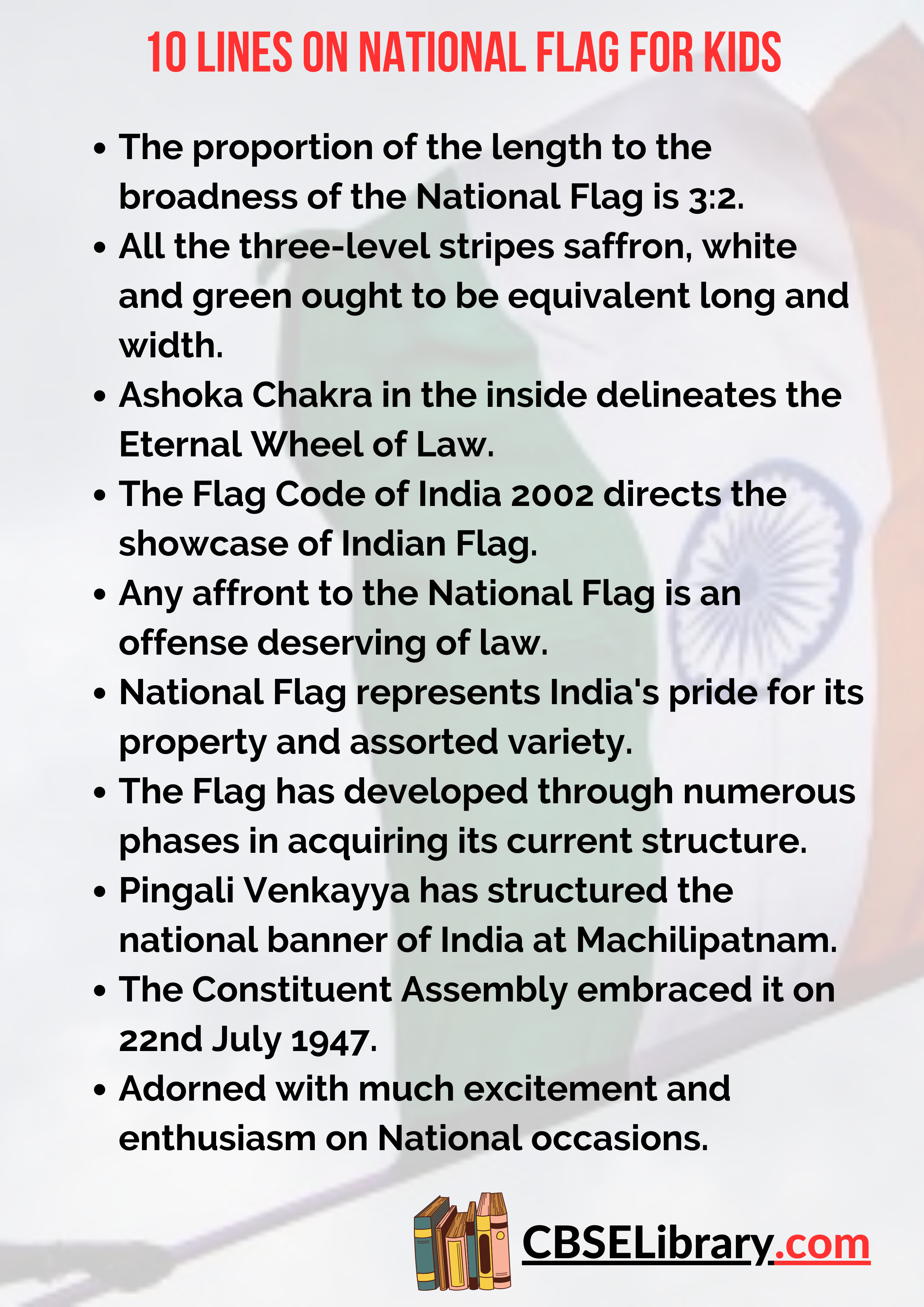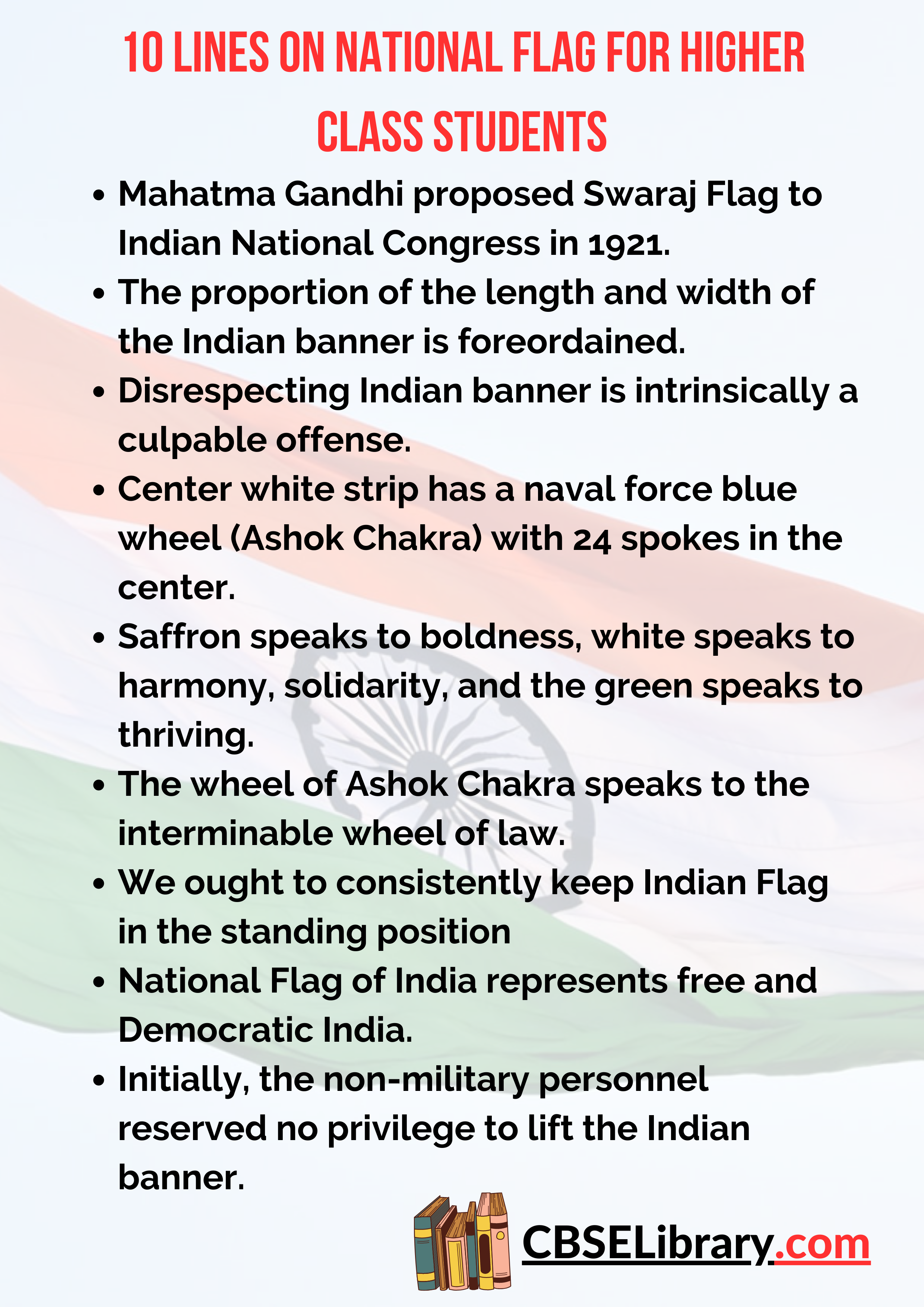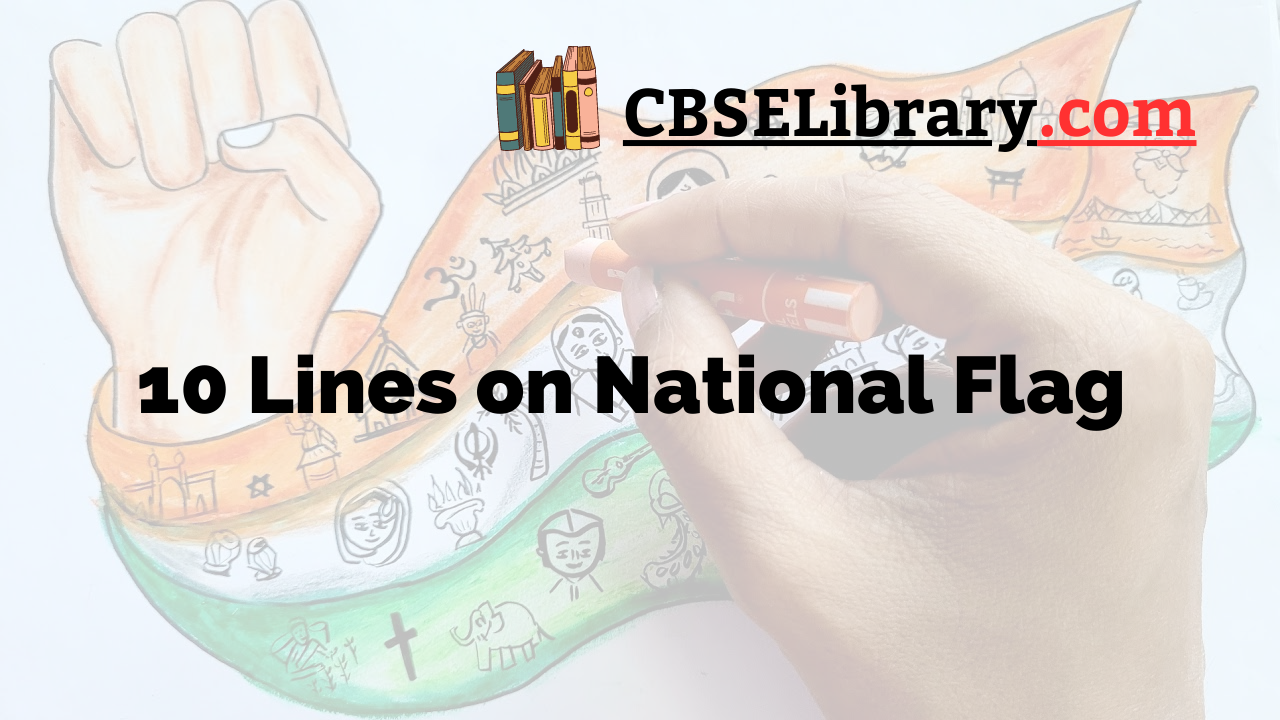10 Lines on National Flag: The Indian Constituent Assembly embraced the National Flag of India as the Flag of the Dominion of India on 22nd July 1947. A similar Flag had later held as the Flag of the Republic of India when the Constitution of India happened on 26th January 1950. Indian National Flag has the name Tricolor or Tiranga as it has three hues and is rectangular. The Tricolor is an image of India’s opportunity and presentations its solidarity and qualities. The National Flag of a Country speaks to its social and profound tendencies, its decent variety, the pride of the country, and its rich legacy.
You can read more 10 Lines about articles, events, people, sports, technology many more.
Set 1 – 10 Lines on National Flag for Kids
Set 1 is helpful for students of Classes 1, 2, 3, 4 and 5.
- National Flag represents India’s pride for its property and assorted variety.
- The Flag has developed through numerous phases in acquiring its current structure.
- Pingali Venkayya has structured the national banner of India at Machilipatnam.
- The Constituent Assembly embraced it on 22nd July 1947.
- The proportion of the length to the broadness of the National Flag is 3:2.
- All the three-level stripes saffron, white and green ought to be equivalent long and width.
- Ashoka Chakra in the inside delineates the Eternal Wheel of Law.
- The Flag Code of India 2002 directs the showcase of Indian Flag.
- Any affront to the National Flag is an offense deserving of law.
- Adorned with much excitement and enthusiasm on National occasions.

Set 2 – 10 Lines on National Flag for School Students
Set 2 is helpful for students of Classes 6, 7 and 8.
- The hues saffron, white and green together makes the banner look extremely exquisite.
- It had experienced numerous progressions since the principal opportunity battle.
- The current type of the national banner appeared from 22nd July 1947.
- Pingali Venkayya, who has structured the Indian Flag, was an Indian political dissident.
- The Ashok Chakra in the banner represents the interminable wheel of law.
- Indian banner is an image of opportunity for all individuals.
- The Indian Flag joins the individuals of various religions in a single string of fraternity.
- The three hues in the banner speak to fearlessness, harmony, and success.
- We should give the most extreme regard to our national banner.
- The Indian banner is simply the image of pride, nationalism, and dependence.
Set 3 – 10 Lines On National Flag for Higher Class Students
Set 3 is helpful for students of Classes 9, 10, 11, 12 and Competitive Exams.
- We ought to consistently keep Indian Flag in the standing position
- National Flag of India represents free and Democratic India.
- Initially, the non-military personnel reserved no privilege to lift the Indian banner.
- The main Indian Flag, by Pingali Venkayya, was Swaraj Flag.
- Mahatma Gandhi proposed Swaraj Flag to Indian National Congress in 1921.
- The proportion of the length and width of the Indian banner is foreordained.
- Disrespecting Indian banner is intrinsically a culpable offense.
- Center white strip has a naval force blue wheel (Ashok Chakra) with 24 spokes in the center.
- Saffron speaks to boldness, white speaks to harmony, solidarity, and the green speaks to thriving.
- The wheel of Ashok Chakra speaks to the interminable wheel of law.

FAQ’s on 10 Lines on National Flag
Question 1.
What do the 3 shades of the banner mean?
Answer:
In this manner, to maintain a strategic distance from a partisan relationship with the shading plan, saffron, white and green were picked for the three groups, speaking to fortitude and penance, harmony and truth, and confidence and valor individually.
Question 2.
What does the Indian banner mean for kids?
Answer:
The Indian banner is a rectangular and level banner. It highlights three equivalent groups of profound saffron, white and green. The groups are flat. The shading saffron represents penance; white represents harmony, virtue, and trustworthiness and the green represents certainty and progress.
Question 3.
For what reason do we salute our national banner?
Answer:
At the point when you salute your banner, it doesn’t mean you revere it however you recall the individuals who battled for your opportunity that you appreciate now. Wearing banner conflicts with the standards of the banner, yet for what reason is it overlooked and considered devoted instead of rude?
Question 4.
What do the banners represent?
Answer:
The hues additionally have significance, including the red importance strength and valor, white importance virtue and guiltlessness, and blue speaking to watchfulness, persistence, and equity. A banner isn’t only an image, however a route for a nation to depict itself to the remainder of the world.
